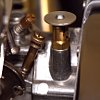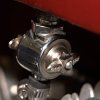I recently watched someone struggle with an act I perform almost mindlessly.
I thought to myself, “Self, maybe you ought to write an article about that.” As the title of this piece has likely already told you, that act is starting up a carbureted motorcycle. It sounds plain silly, but the starting procedure is a bit different with carbed mo’cycles. They are disappearing, but there are still a handful of carbureted models in showrooms, and many, many more still prowling the streets pretty happily.
Many riders of modern fuel-injected bikes are cowed by carbies, but the reality is that they are a perfectly serviceable way to deliver fuel to a motorcycle — provided you know what to do with ‘em. Here’s a quick list of things to remember if you’re trying to start up a bike that ain’t fuel-injected.
Get gas into the carb
Open the tank and check the fuel level. Most carbureted motorcycles do not have a fuel gauge.
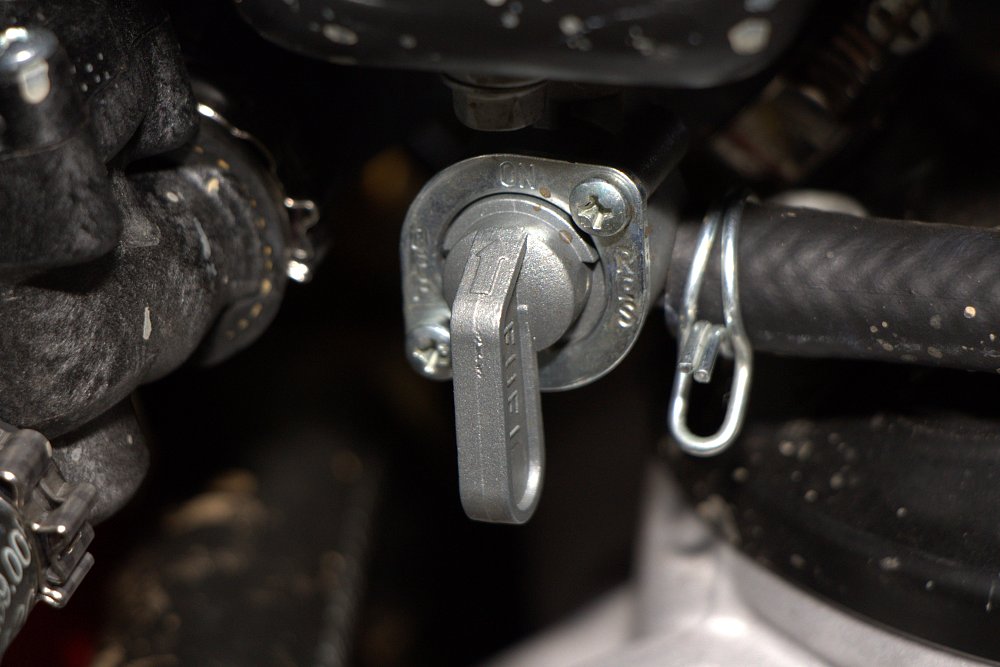
From there, the fuel tap (petcock) has to allow fuel to flow. Often you’ll see three positions marked on a petcock: “ON,” “OFF,” and “RES.” The “on” position should be fine unless the fuel level is very low, in which case you’ll want to use “RES.” "RES" is reserve, a spot on the petcock that draws fuel from the very lowest point in the tank. If you're not sure if there's enough motion-lotion in the tank, use "RES." (Or, to save your time, just put some gas in it and use "ON." You gotta put gas in there some time.) If they're not labeled, or there's just a knob like on a Sportster's "winged" petcock, make sure the knob runs parallel with the direction the outlet faces to open it.

Other bikes may have “PRI” instead of “ON.” You can use either setting, but the prime function is really just a way to get fuel into the bowl of a bike equipped with a vacuum petcock; that's a petcock that turns on and off automatically. (That's the theory, anyway. I hate the damn things and retrofit everything to a normal gravity feed valve.) Older Harley Big Twins (pre-1965) have a petcock on the top of the left tank; that needs to be unscrewed. (Or unscrewed and lifted, if you’re looking for the reserve in the case of a bike with empty tanks.) And if you are working with an unmarked aftermarket unit, usually when the lever is in-line with the petcock’s outlet, you’re flowing fuel in the “ON” position.
Prime
Cold (read: room temeprature or colder) bikes don’t behave like hot ones. They atomize fuel poorly. They can run funny when cold. Carbs are tuned to run well on a hot engine, which should make sense… if you want to go ride your bike all day, it’s probably going to spend a lot more time hot than cold. The problem, of course, is that the carb then is not set up to deal with engines at lower temperature. What is necessary is a way to get more gas into the engine for starting purposes.
Enter the starting circuit. In order to ease starting, carbureted bikes are generally equipped with some sort of method of richening (decreasing the air/fuel ratio) the mixture manually upon startup. This is known as “priming” the engine; setting it up with a rich enough condition that it makes it more likely the ignition can light off the motor and get it running. Colloquially, many people refer to this manual enrichment as the “choke,” but the reality is that a choke is a specific item, and not every enrichening device is or acts like a choke.
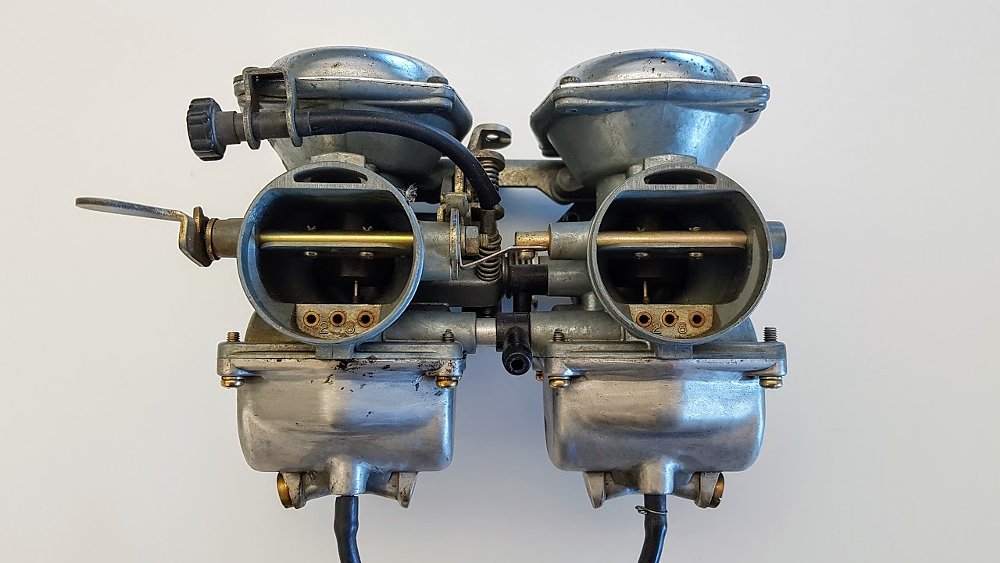
Since I brought it up, let’s start with the choke. Some carburetors have a movable flap that restricts airflow to the carburetor. The carburetor draws the same amount of fuel it normally would, but it is deprived of air, thus richening the mixture. With this type of enrichening device, the throttle shouldn’t be opened much, if at all. (Some choke plates have a flap that opens under engine vacuum, others do not. If you’re not sure, leave it closed.)
Some carbs have an accelerator pump. The accelerator pump provides a “shot” of fuel when the throttle is opened fast to help ease the transition of a carburetor off one circuit onto another. While the pump is not on the carb to richen it for starting, it often does a fantastic job. (S&S Super E carburetors come to mind, as do Keihin CV carburetors fitted to Harley-Davidsons and some metric motorcycles.) Note that operation of an accelerator pump involves opening the throttle rapidly, so normally this is done a few times for a couple of “prime shots” to be squirted into the manifold. When the engine is turned with either the kicker or starter, vacuum draws this fuel into the cylinders.
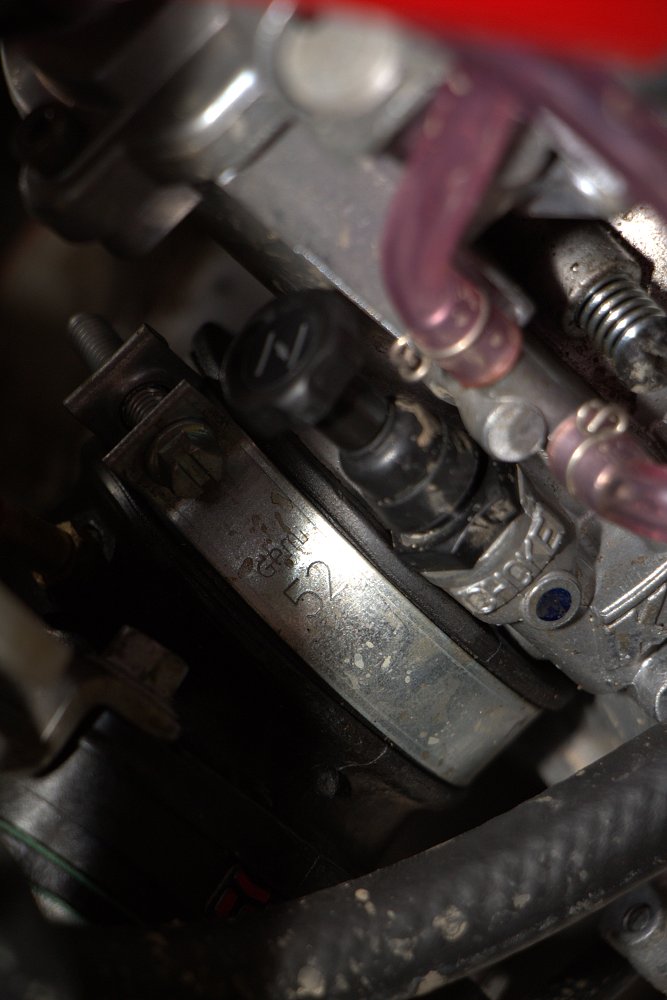
Lots of more modern carburetors have an “enrichment circuit.” This is a special circuit within the carburetor that is only opened for starting. In order for the fuel in this type of carburetor to be drawn into the cylinders, leave the throttle shut completely when starting, or this circuit will be bypassed totally. Barring someone stumbling into a very valuable barn-find or inheritance, I’d submit that this type of carburetor is probably the one you’re most likely to encounter, as they are plentiful, and fitted to many metric machines that are still quite affordable.
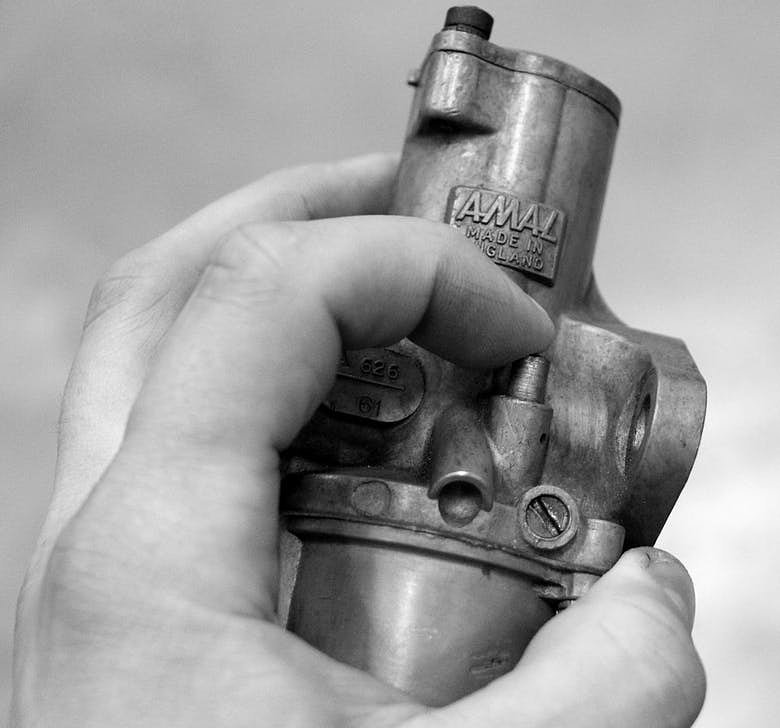
The final type of enrichment device is the tickler. These are a bit of a curiosity unique almost exclusively to older British machinery. There is normally a plunger that is depressed, effectively flooding the carburetor to provide a priming charge of fuel. (In fact, the “stinky finger” comes to those who tickle too long — fuel generally leaks out around the tickler!) These can be found on Amal and SU carbs, principally.
Decompress
No, not you. Some bikes, mainly big singles, are fitted with a manual decompression lever or cable (or an automatic decomp unit). You’ll want to use this now, unless you like strong leg muscles or making batteries cry and starters fail.
Turn the engine over
This is significantly easier with electric starting, of course. Let the engine crank until it does engine stuff. If you’re stuck kicking, you’ll want to be very sensitive to what the engine seems to “want.” Does it cough? Great! It probably wants more fuel. Don’t forget to get that idle up when it starts running; it’s all too easy to have the engine bog out and die, and on some bikes, the in-between area that’s not “cold” and not “operating temp” can be a no-man’s land for starting. If you are smelling large amounts of gas from the exhaust, you may have flooded it. (Be aware that there are some bikes that are nearly un-flood-able… they just looooove gas when starting.)
If you do happen to flood your machine (gotten too much gas in the jugs), you can help clear the bike by holding the throttle WIDE OPEN and turning the engine. (Be prepared to release the throttle if the engine suddenly comes to life… running it at high speed before precious oil has made its way about the engine is a mega-sized Very Bad Thing.)
Turn the choke off as soon as is practical. On some bikes, it’s nearly a requirement shortly after firing up, while others are “cold-blooded” and like to warm up for a while.
Adjust your idle
Turn it up! You’ll likely notice that the idle speed adjuster is somewhere very conspicuous and easy to get to, and may even have a knurled/fluted head to be adjusted without tools. As the bike warms, the idle will be higher and higher. This is normal and expected; idle generally needs to be tinkered with, or you’ll be using your right hand to keep the idle speed where it needs to be. (A very few carbs, like a Rivera Primo Eliminator-series unit, have a “fast idle” cam, but those are pretty few and far between.)
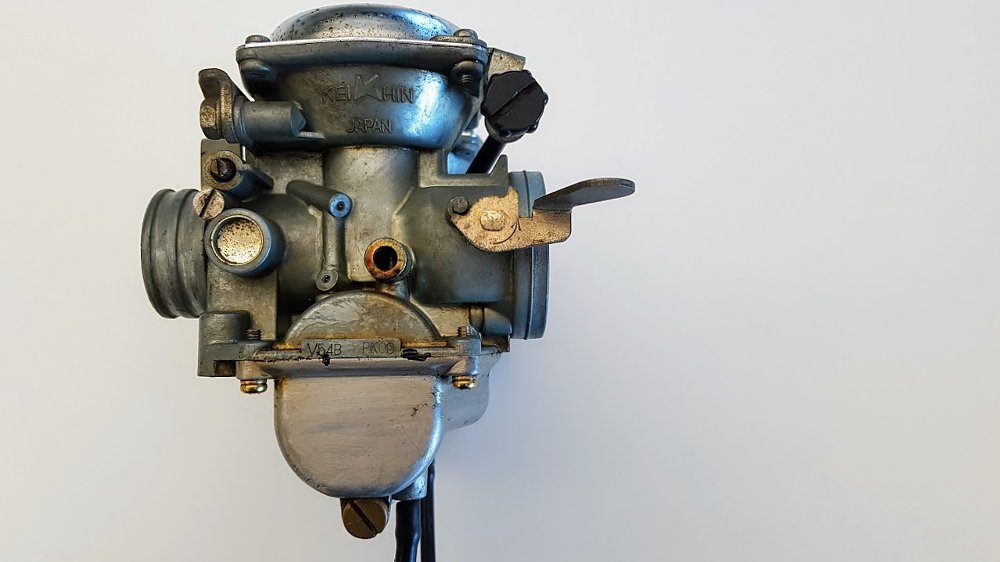
Don’t idle ‘em so low you’re starving parts for oil, but don’t let them idle to the moon, either. Give the bike some time to come up to temp: put on your helmet/goggles/have a smoke. Most carbureted bikes will thank you, and you’ll avoid the inevitable restart a few seconds later.
Go ride!
Don’t forget to be nosy and unscrew the fuel cap every now and again to see how much go-juice you got left. Protip: If the bike suddenly runs awfully, dies, and restarts, you have forgotten to open the petcock. Everyone forgets to do this at some point, and some of us forget all the time. (The author has had more bikes die in the driveway while warming up than should be allowed by law.) When you finally park the bike once again, don't forget to close that petcock, lest you overhwelm the poor needle(s) in the carburetor.








